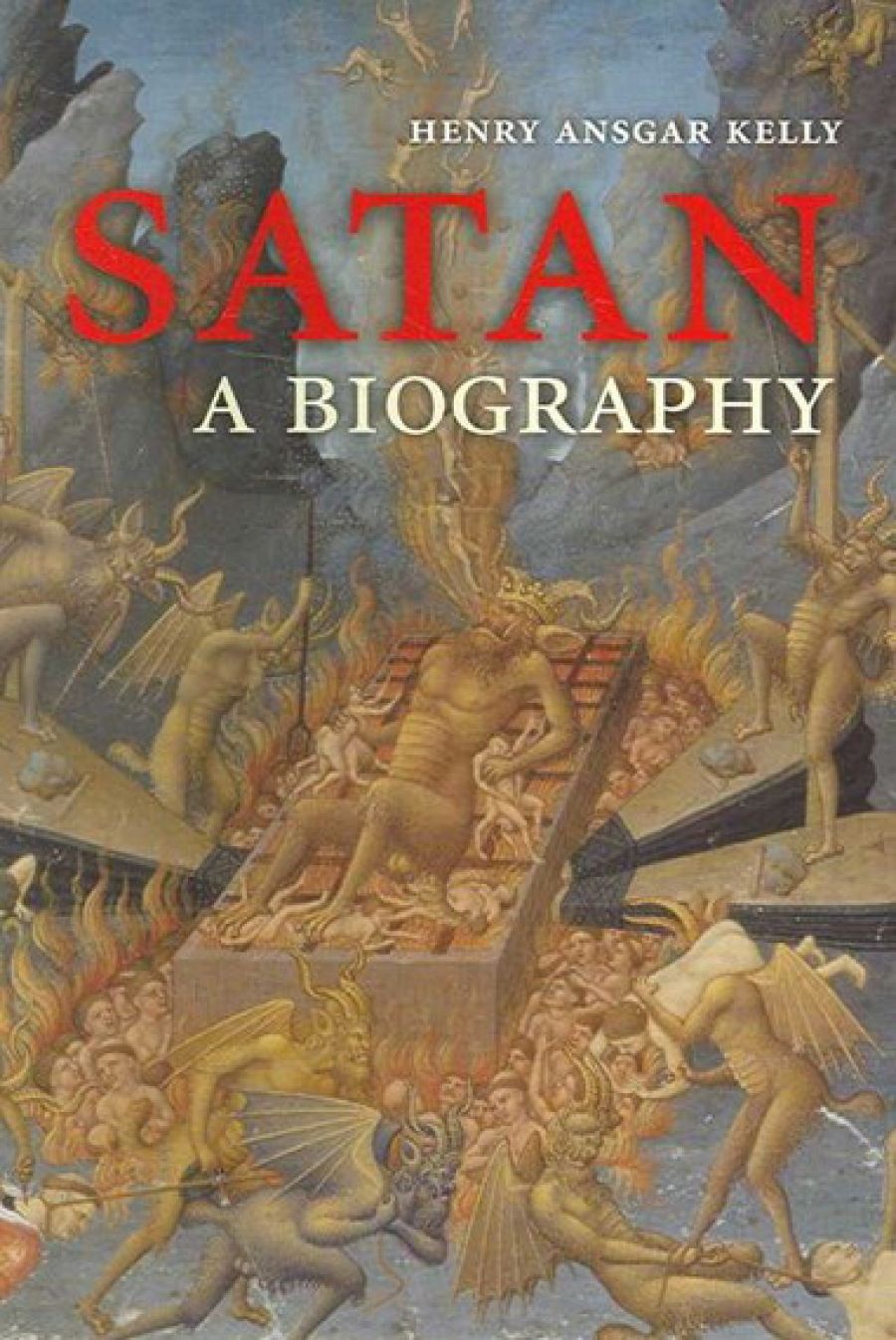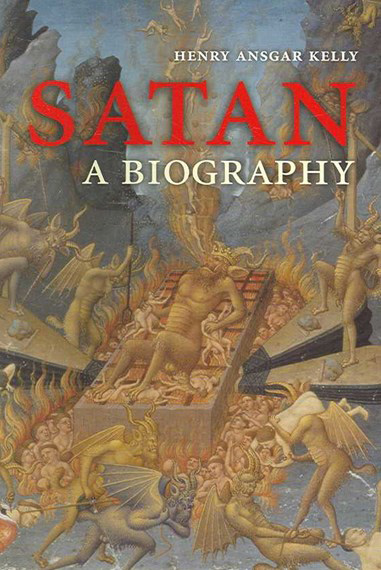
- Free Article: No
- Contents Category: Religion
- Review Article: Yes
- Online Only: No
- Custom Highlight Text:
One stock form of biography is attempting the rehabilitation or revision of a character whose reputation seems well settles. In theory, the most challenging of such projects is that of returning the Devil, otherwise known as Lucifer or Satan, from the lowest circle of human estimation to a more sympathetic or nuanced position. With a tip of the hat to Jack Miles’s God: A Biography (1995), Henry Ansgar Kelly constructs a diabolical life of sorts, retracing the idea of Satan across the centuries from ancient Israel to contemporary Catholicism. This is partly a popularising presentation of scholarly research on an idea and its variations, and partly the outworking of the attractive conceit, borrowed from Miles, that behind the pages of scriptural and apocryphal material lies the development of a real character.
- Book 1 Title: Satan
- Book 1 Subtitle: A bibliography
- Book 1 Biblio: CUP, $39.95pb, 360pp
- Book 1 Cover Small (400 x 600):

- Book 1 Cover (800 x 1200):

Although Kelly has contributed to the topic in his academic publications, mostly in regard to medieval sources and practices, Satan focuses largely on the Bible itself. Kelly asserts his narrative presence rather fulsomely as an avuncular Virgil, taking the reader into depths of scriptural evidence for Satan. Much of the book is a kind of extended paraphrase, with commentary, on the key biblical texts in which Satan appears or which have otherwise been influential in depictions of the Devil.
The earlier references to Satan, particularly in the Hebrew Bible, paint a very different picture from the later and literary, let alone folkloric, Christian depictions of the Devil. From the Hebrew Bible through Jewish apocryphal literature such as the Dead Sea Scrolls, to the New Testament, the original meaning of ‘Satan’ was an adversary or opponent, not the fallen angel and personal embodiment of evil found in Dante or Milton. The early biblical Satan is, Kelly shows, under the control of God, and functions more as an auditor or investigator than as a real villain.
Most of Kelly’s insights are negative, relative to the popular or traditionally constructed Christian imagination: there is no devil in the Garden of Eden (sometimes a snake is just a snake); there is no ‘fall’ of angels, in the Old Testament at least; and at the earliest points Satan is more a divine henchman testing sincerity than the embodiment or source of evil. Remarkably, Kelly s attempt to construct a ‘serial and incremental biography’ spends only three pages on the classic treatment of Satan in the Book of Job, but makes its case in relation to a variety of texts from the Hebrew Bible. Even in the Gospels, the figure of Satan is more ambiguous than most will have assumed. Much of this is fairly standard biblical scholarship, and those who warm to his informal style and contrived exhortation (‘let’s see …’) may find Kelly a useful guide.
Yet if Kelly is part Virgil, he is also part Luther. He finds, unremarkably, that patristic and medieval interpretations of these texts range far beyond their original meanings or assumptions, and thus help explain that ‘Devil’ all too well known in popular culture. Kelly, however, seeks to turn the undeniable contrasts between elements of earlier and later depictions of Satan into a systematic and canonical contrast between pure scriptural truth and the dross of tradition. He argues that the differences between biblical and later pictures are more or less absolute, and that there are two biographies – a ‘first’ (true) and a ‘second’ (false) – of Satan in Jewish and Christian tradition. The canonical writings of the Old and New Testaments, and even ancient apocryphal works, become for him definitive sources, data which under analysis can supposedly offer some consistent characterisation – of a much-maligned being, it seems. Texts referring to Satan thus become not diverse reflections with differences of implicit and explicit world view, but a coherent set of clues to unravel a specific and objective answer. Christians may well valorise certain writings in ways that reflect and undergird their own faith commitments; Kelly merely insists that the biblical documents are somehow more accurate because older or original, and the Christian tradition itself (otherwise) wildly misleading.
This exaggeration lessens the value of the book. While a contrast between some early biblical portraits and some later Christian reflection is unavoidable, Kelly tries at once to rehabilitate Satan and to systematise biblical thinking both in ways that are unsustainable.
The genre of learned but folksy biblical paraphrase is often the means to Kelly’s own version of what he disparages in others’ work as interpretive ‘retrofitting’. Disparate elements, chronologically within the period of the writing of Jewish and Christian scriptures, are forced unconvincingly into the ‘old’ (good) view, where Satan or other adversarial spiritual beings are either divinely authorised or just insubstantial.
In fact, the biblical and other ancient literature is not nearly as uniform as this. The undoubted contrast between Satan as divine henchman and Satan as personified evil is already appearing, if unsystematically, within and alongside the writings that were to be canonised by Jews and Christians. This is not just a matter of sympathy for the devil; for instance the literal translation ‘evil’ is rejected for describing a divine Spirit sent to King Saul (1 Sam. 16), not for philological reasons but simply as ‘inappropriate, since it attributes iniquity to God himself’. Such theological correctness extends to interpretation of the (Dead Sea) War Scroll, which suggests that God created the evil force or figure ‘Belial’, an idea Kelly has to reject since it precedes the clearer medieval ‘fall’ of Satan. Or regarding the good and bad spiritual ‘principles’ of the Community Rule (from the Dead Sea Scrolls again), Kelly has an ‘inclination’ to prefer a psychological to a supernatural interpretation. Taking this text at face value would amount to ‘heresy’ – but elsewhere Kelly has depended on doing precisely this, against interpretative overlays.
The accretions of the (bad) ‘new biography’ are therefore all supposedly post-biblical. We are left wondering why Origen and Augustine, and Milton and Dante, matter. The unsatisfying treatment of such remarkable theological and literary material of later date has to do not just with its quality and significance but with the intractable problem of evil itself.
If the Bible does not do quite as well from this exercise as Kelly intends, perhaps Satan and evil itself have been done the greater injustice. However curious or problematic the transformation of the early Hebrew angelic figure into the medieval demonic force may be,s that biography of Satan is a potent historical resource for reflection on the problem of’ evil and its causes. Those hoping for such a reflection in Satan: A Biography will be disappointed. Evil may not be banal here, but Satan certainly is.


Comments powered by CComment